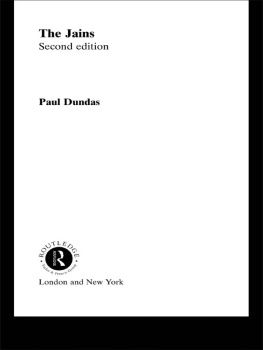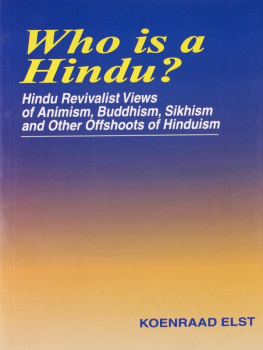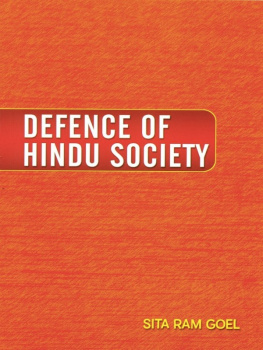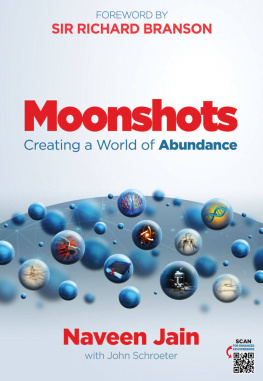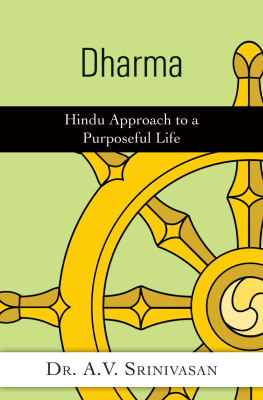Dharma in America
America now is home to approximately five million Hindus and Jains. Their contribution to the economic and intellectual growth of the country is unquestionable. Dharma in America aims to explore the role of Hindu and Jain Americans in diverse fields such as:
- education and civic engagements
- medicine and healthcare
- music.
Providing a concise history of Hindus and Jains in the Americas over the last two centuries, Dharma in America also gives some insights into the ongoing issues and challenges these important ethnic and religious groups face in America today.
Pankaj Jain is Associate Professor of Philosophy and Religion at the University of North Texas, USA.
First published 2020
by Routledge
2 Park Square, Milton Park, Abingdon, Oxon OX14 4RN
and by Routledge
52 Vanderbilt Avenue, New York, NY 10017
Routledge is an imprint of the Taylor & Francis Group, an informa business
2020 Pankaj Jain
The right of Pankaj Jain to be identified as author of this work has been asserted by him in accordance with sections 77 and 78 of the Copyright, Designs and Patents Act 1988.
All rights reserved. No part of this book may be reprinted or reproduced or utilised in any form or by any electronic, mechanical, or other means, now known or hereafter invented, including photocopying and recording, or in any information storage or retrieval system, without permission in writing from the publishers.
Trademark notice: Product or corporate names may be trademarks or registered trademarks, and are used only for identification and explanation without intent to infringe.
British Library Cataloguing-in-Publication Data
A catalogue record for this book is available from the British Library
Library of Congress Cataloging-in-Publication Data
A catalog record has been requested for this book
ISBN: 978-1-138-56544-9 (hbk)
ISBN: 978-1-138-56545-6 (pbk)
ISBN: 978-1-315-12302-8 (ebk)
Being Hindu, being Jain, being American
I was born in a small town called Pali in the Indian state of Rajasthan. This town has a long history of Jains and Hindu living together. As early as 912 CE, a magnificent Jain temple was built in the heart of this town. Also in the heart of the town, a replica of Gujarats famous Somnath Temple was constructed by the great King Kumarpal in 1152 CE. This Hindu ruler adopted and patronized Jainism in his late years. Growing up in Pali from the early 1970s to late 1980s, I experienced and observed both Hinduism and Jainism at first hand. My mother remains a devotee of the Hindu god Hanuman, and my father practices Jainism. My grandmother (my fathers mother), who always lived with us, used to walk daily to the couple of Jain temples that were about 2 kilometers from our home, before she would take her first sip of water and breakfast. She would perform all her rituals at the temples for a couple of hours, walk back to our home, recite her Jain verses, and then start her day. In addition to the Jainism practiced by my grandmother, I observed and often participated with all my Hindu friends in visiting our local Hindu temple in the evenings, mostly to enjoy the sweets that the priest would distribute. We also celebrated several Indian festivals and holidays, such as Diwali and Holi with fun and frolic. My parents also took us to see historical and religious towns in the western Indian states of Rajasthan and Gujarat and the southern Indian states of Karnataka and Tamilnadu that has several Hindu and Jain temples. Almost all of my early life I learned, observed, and experienced the theologies, geographies, and histories of Hinduism and Jainism.
However, like most other middle-class kids, religion was never the center of my life as a young boy. My father was the first-generation college graduate from an Engineering College in the southern state of Karnataka, and I was expected to follow in his footsteps. Since my grandmother did not allow him to study abroad, I was the next bearer of that dream in our family. As soon as I completed my Computer Science degree, I took the GRE and TOEFL to come to the United States. When my student visa application was rejected twice, I worked as a software engineer for a few years and finally could come to New Jersey in 1996 on the H1B visa. Since the 1990s, thousands of Indian engineers have taken this route each year to go to the United States, and the trend continues today.
As I was about to leave India, I started realizing the importance of my Indian heritage and culture, something that had been just a footnote for me until then. Our employer invited two American software experts to India to teach us a programming language called Smalltalk. As the training came to an end, our Human Resources department gifted them a copy of the Bhagavad Gt and a few albums of Indian classical music. This gifting activity was my first wake-up alarm. These gems of Indian culture that my colleagues valued enough to gift to foreign guests remained far from my thoughts and perhaps from millions of other young Indians whose first and foremost goal remains to become employable, mostly in STEM (Science, Technology, Engineering, and Mathematics) related fields. As I was about to lose and leave my motherland for a foreign country, I started my journey to learn about its culture and heritage. I started visiting the local Ramakrishna Vedanta Center in Hyderabad and studied several books on Indian philosophy, spirituality, and history. I also started practicing yoga and meditation and started listening to Indian classical music, all for the first time, in my last year of being in India. After few years of arriving and living in New Jersey, this journey to study Indian culture took the significant next step when I left my IT career and became a full-time MA student in the Department of Religion at Columbia University and later a PhD student in the Department of Religious Studies at the University of Iowa. After completing my PhD and teaching for a couple of years at Rutgers and North Carolina State Universities, I moved to the Dallas area which is where I continue to imagine being a Jain, being a Hindu, and being an American.
As I continue to live the American dream in these last more than two decades, I have observed and worked with hundreds of other Hindus and Jains in North America. Some of them, hopefully, will be able to resonate with the information presented in this book. Many academic and popular books trace the history of Hinduism in America. Almost all these books focus on temples and organizations that are about practicing Hinduism in one way or the others, such as Hindu-inspired meditation movements or practicing yoga. However, for most Hindus and Jains in America, and in India, life is not just about practicing spirituality. For many Hindus and Jains, food and healthcare practices, music, and the education system in America continue to remind them to keep their ancient traditions alive in their new adopted land where they are a tiny minority. This book is a humble compilation and recollection of some such Hindu and Jain American attempts in the last few centuries in the Americas.
I am now taking this opportunity to acknowledge all the people who have helped me in this journey. I have profound gratitude for the Faculty Development Leave and Scholarly and Creative Activity Award in 2018 from the University of North Texas that helped me travel and undertake research for the book. Thanks are also due to the anonymous reviewers who significantly improved the manuscript with their detailed comments. I am grateful to colleagues, such as Vivek Virani, Lisa Owen, Balwant Dixit, and Dan Neuman for valuable inputs.




